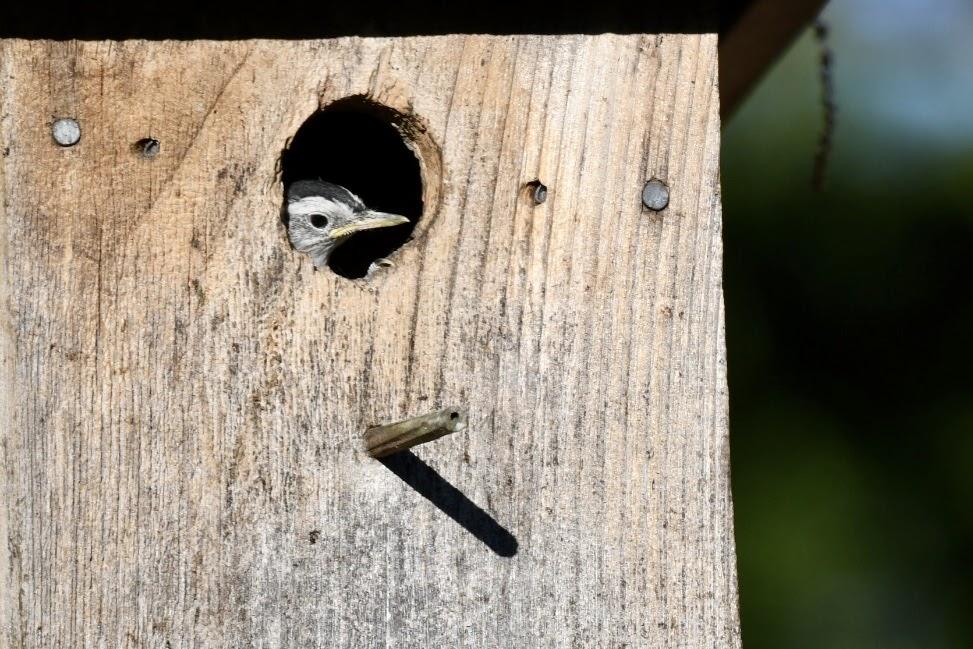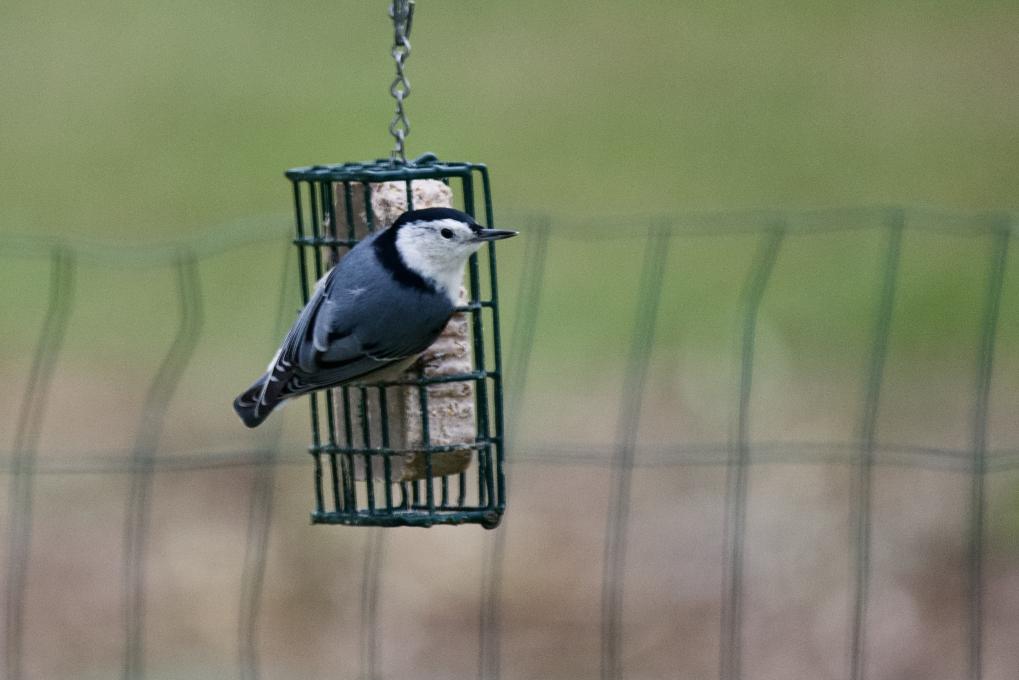Dennis
Forum Replies Created
Viewing 20 posts - 1 through 20 (of 20 total)
-
DennisParticipantAbout 10 years ago we had a crow with one leg coming to our yard along with a family of crows. Don't know if West Nile Virus played a role in this, or not. West Nile did not have a large presence in Mid Coast Maine that I know of. We called this crow Peg. Peg survived until about Mid Winter and then disappeared. I've observed a lot of territorial defense and skirmishing among the crows in our neighborhood, but this has always resulted in successful defense of territory with intruders backing down and leaving. The most aggressive and surprising behavior I've seen is when, one spring, a crow swooped down onto a young Grey Squirrel driving its feet into the squirrel's back, then very quickly and violently driving its beak into the back of he squirrel's head and killing it. It then proceeded to eat the squirrel.in reply to: A Real Murder of Crows #760607
-
DennisParticipantA related question might be do females seek younger, possibly more virile partners, outside their own pair bond? If so, this might have advantage toward producing healthy offspring, especially if her mate is older and less virile.in reply to: Secret Sex Lives #760590
-
DennisParticipantInbreeding can have same result among crows as with humans. Recessive genes can combine to create deformity or genetic weakness among the group. Apparently, inbreeding was not uncommon among early isolated human groups and even humans today isolated by geography, social or religious structure. I don't find any of this surprising.in reply to: Secret Sex Lives #760586
-
DennisParticipantThere seems to be a advantage to the social/breeding structure of crows and it seems remarkably similar to humans and other highly social animals. It clearly has been successful in spite of efforts by humans to eradicate them.in reply to: Routes to Breeding Status #760579
-
DennisParticipantI have been observing a family of crows that have come to our compost for about 30 years. Most likely there have been several generations of the same family. For several years I would throw out peanuts for them every morning and before long they were arriving in our yard before I could get the peanuts out. They would perch in the trees at the edge of the yard and watch me through the windows and call until I came out with peanuts or compost. There was one particular individual that developed a very curious routine when I was out in the yard. It would fly into the trees above me and begin to arch its neck and dip its head and beak down in front of its chest repeatedly. While dipping its head it would make clicking noises with its beak and rattle calls followed by a cooing vocalization that sounded just like a mourning dove. This ritual was clearly aimed at me since it deliberately flew to branches above me and there were none of its companions nearby. I figured it must be sucking up to me to garner more peanuts, so I gave more peanuts. It often would see me in the house through the picture window and fly at the window only to veer off over the roof at the last moment. This crow clearly knew me and was attempting to manipulate me. And was quite succssful.in reply to: Creative Crows #760348
-
DennisParticipantSomething I have often wondered is how far afield the communications of crows extends. I have often heard a crow call out and another crow a hundred yards away respond and then a third, even more distant crow, respond to the second. Is it possible that this communication can travel on almost indefinitely? Say twenty or thirty miles? Or, more?in reply to: Life in a Flock #760019
-
DennisParticipantI live in Mid Coast Maine where there is a fairly large municipal dump about 4 miles from our home. In Winter, we often will see large numbers of crows headed away from the dump toward the shore. We have never found the roosting site but have seen as many as 60 crows all headed in the same direction in small groups. We also have a family that frequents our yard looking for snacks in the compost or peanuts that I have throw out for the. In spring we have large flocks of Grackles that show up. Some stay and nest in or yard while others move on to other nesting grounds.in reply to: Life in a Flock #760017
-
DennisParticipantI believe there can be a lot of variability from year to year and even from individual crow to individual crow. We have always had lots of grackles nesting in the tops of a tall cedar hedge in our yard; and one year there was a family of crows that included an individual that was much larger than the others. This individual was very aggressive in its predation on the grackles whose nests were easy targets. It's aggressiveness and size led me to give it the nickname "Black Marauder". None of the other crows appeared to participate in these attacks. That crow has long since passed on and we only occasionally see this kind of behavior from the crows in our neighborhood. I have also seen some of the many chipmunks in our yard eat Robin's eggs and young.in reply to: What is a Crow? #759147
-
DennisParticipant1. I would point out that grey squirrels and chipmunks, which are quite abundant here, are by far worse predators than the crows. 2. There is a family of crows that frequents our compost pile, and has for many years. They are quite familiar with me and will often fly from the field out beyond our yard when they see me through the window getting ready to go outside. They will also sit in the trees outside the house and call until I come out with the compost. I have also located their nest high in a pine tree about 1/4 mile away (as the crow flies). 3. There are both Ravens and Crows where e live in Maine. The Crows seem more gregarious and social, traveling in small groups; while the Ravens usual travel alone or in pairs. 4. Almost every other creature that is subject to predation by large predatory birds or mammals will benefit by the presence of crows. The crows very readily announce the presence of hawks, owls, cats, fox or coyotes in the area by mobbing and frantically "yelling". Sometimes you can even tell by how they mob what predator is around. For instance, there was a fox that was coming to our compost one spring, not for the compost but the mice. The crows would follow the fox down through the woods hanging low in the trees and raising quite a fuss. We could almost predict when the fox would come around the shed by the movement of the rows. By contrast, hawks will usually freeze high in the trees and crows will mob from above and dive bomb them, so there isn't a lot of lateral movement until the hawk (or owl) decides to make a run for it to escape.in reply to: What is a Crow? #759142
-
DennisParticipantThe biggest challenges for me in curating and editing are cost of editing software, learning curve to master editing software, and patience to actually sit and do the editing. Consequently I currently am striving to take the best phots I can to minimize need for a lot of editing.

-
DennisParticipantRed Tailed Hawk. Nikon D500 f/16 1/1000 500mm ISO640.
 in reply to: Practice Capturing Birds in Flight #758335
in reply to: Practice Capturing Birds in Flight #758335 -
DennisParticipantI like this shot on a foggy day. Because I was shooting beyond ideal distance for the Nikon 200-500 zoom lens, and shutter speed could have been faster, some of the detail is lost, but, if you look carefully, you may notice that both the first and last birds in this group were looking directly at the camera. You can also notice a feather floating down below the group. D7100 f/7.1 1/800 500mm ISO200
 in reply to: Practice Capturing Birds in Flight #758333
in reply to: Practice Capturing Birds in Flight #758333 -
DennisParticipantThese were fun shots because I found a place to wait where I could shoot from high ledges above this Bald Eagle. Shutter speed could have been faster for better detail. The background was frozen bay and very reflective. Sunlight was coming from the left. Nikon D7100 f/8 1/1200 450mm ISO200

 in reply to: Practice Capturing Birds in Flight #758330
in reply to: Practice Capturing Birds in Flight #758330 -
DennisParticipant

 This was a nice intimate moment between two Mourning Doves. The wire fence obscures the clear shot, and perhaps, lends the sense of privacy. in reply to: Practice Getting Creative and Telling Stories #757833
This was a nice intimate moment between two Mourning Doves. The wire fence obscures the clear shot, and perhaps, lends the sense of privacy. in reply to: Practice Getting Creative and Telling Stories #757833 -
DennisParticipant
 I enjoy trying to find birds doing unusual things, unlike the everyday. Again, I was lucky to be in the right spot at the right time, mangrove swamp in Mexico, when this heron leapt out from the tops of the trees. Nikon D7200 with 70-300 mm lens in reply to: Practice Getting Creative and Telling Stories #757826
I enjoy trying to find birds doing unusual things, unlike the everyday. Again, I was lucky to be in the right spot at the right time, mangrove swamp in Mexico, when this heron leapt out from the tops of the trees. Nikon D7200 with 70-300 mm lens in reply to: Practice Getting Creative and Telling Stories #757826 -
DennisParticipantI got lucky with this image. I had the opportunity for a quick shot of this pair of Cedar Waxwings, but noticed that if I stepped just a little to the left there was a deep shadow in the background, which is what I was looking for. I took the quick shot to make sure I had a photo then stepped to the left and recomposed for the better shot. Nikon D500. f/5.6. 1/800. ISO 2500. I chose to center subjects to achieve symmetry and illusion of mirror image.
 i in reply to: Practice Crafting Great Bird Photos #755614
i in reply to: Practice Crafting Great Bird Photos #755614 -
DennisParticipant
 Great Blue Heron. Nikon D500 Nikkor F5.6 200-500 mm lens. F5.6 500mm ISO280 Taken in area where birds are used to lots of human traffic in reply to: Practice Gaining an Audience with Birds #749915
Great Blue Heron. Nikon D500 Nikkor F5.6 200-500 mm lens. F5.6 500mm ISO280 Taken in area where birds are used to lots of human traffic in reply to: Practice Gaining an Audience with Birds #749915 -
DennisParticipant
 I want to get better at capturing birds in flight. This photo was taken with Nikon D500, a recent purchase that was affordable for me and offers excellent capture action. in reply to: Practice Matching Your Gear to Your Goals #747978
I want to get better at capturing birds in flight. This photo was taken with Nikon D500, a recent purchase that was affordable for me and offers excellent capture action. in reply to: Practice Matching Your Gear to Your Goals #747978 -
DennisParticipant
 in reply to: Practice Understanding Birds for Better Photos #746939
in reply to: Practice Understanding Birds for Better Photos #746939 -
DennisParticipantI have been observing a pair of White Breasted Nuthatches in our yard and at our feeders for going on 3 years now. The first year they were extremely timid and came nowhere near me and I kept a respectful distance from them. This year was a breakthrough year since they decided to nest in a bird box on the side of our garden shed. They worked diligently at nest building, tending and feeding their young. What surprised me the most was that they were able to teach me how to coexist peacefully while they raised their young. When bringing food to the nest they would sit on top of shed to check out the surroundings and if I was too close they would begin their little honking all expressing annoyance/alarm. My job was to break eye contact turn from them and walk away. Over time they became more and more tolerant of my presence and proximity as long as broke eye contact. Throughout late summer the family of four has maintained a presence in our yard and is almost as bold as the Black Capped Chickadees when they come to the feeders. I am able to stand fairy close and get some reasonably good photos. What I've learned is that given time birds will learn to trust you in their territory. It might actually take several seasons for this to happen.
 in reply to: Practice Understanding Birds for Better Photos #746936
in reply to: Practice Understanding Birds for Better Photos #746936
Viewing 20 posts - 1 through 20 (of 20 total)




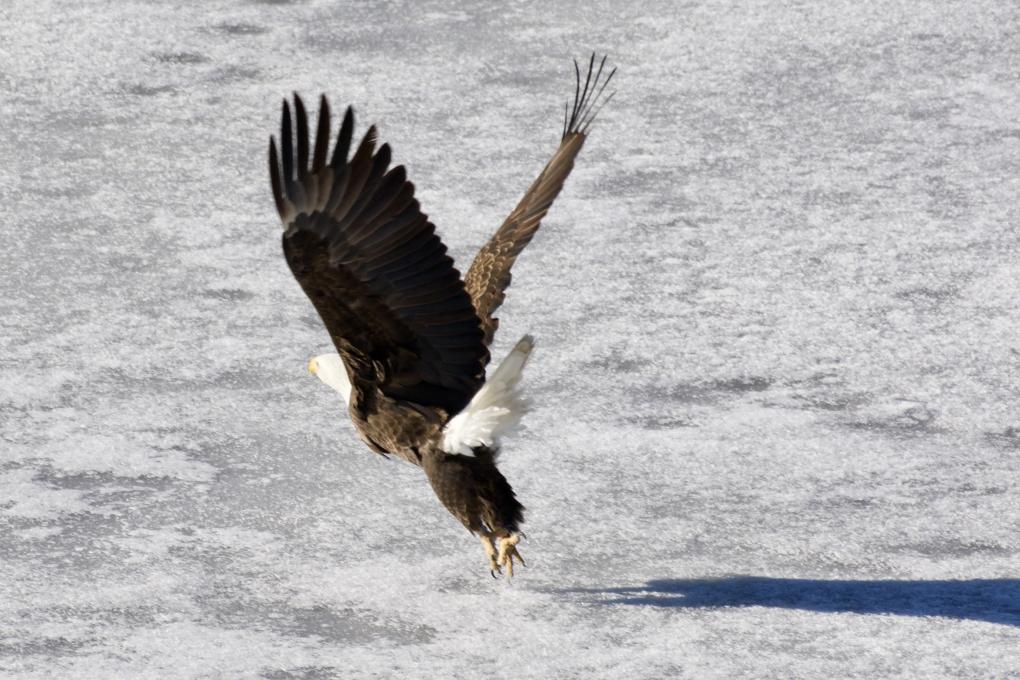
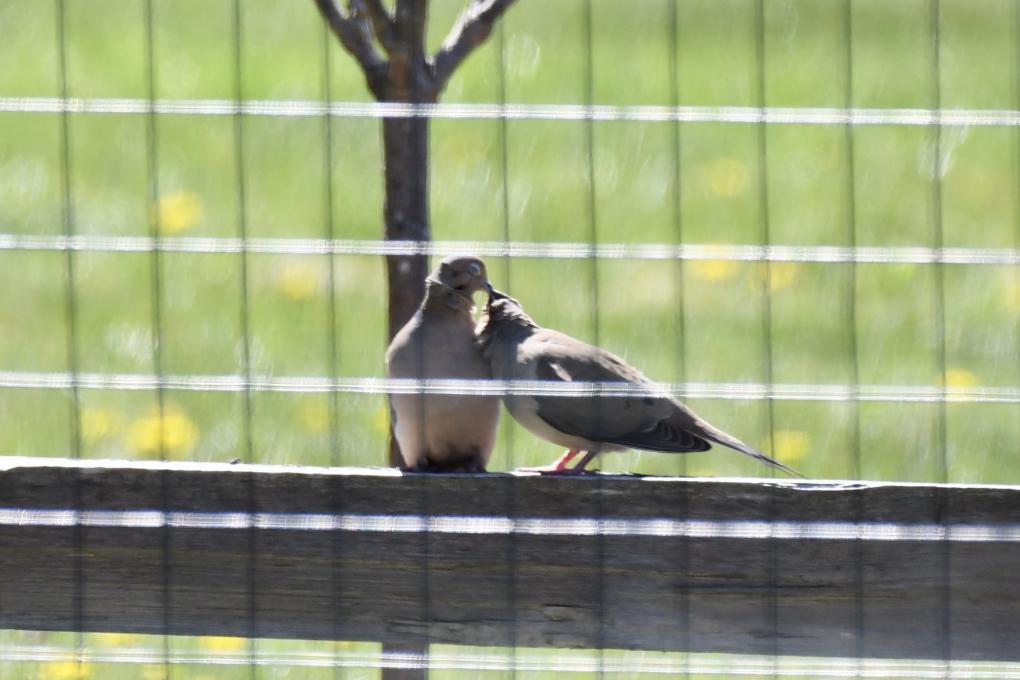
 This was a nice intimate moment between two Mourning Doves. The wire fence obscures the clear shot, and perhaps, lends the sense of privacy.
This was a nice intimate moment between two Mourning Doves. The wire fence obscures the clear shot, and perhaps, lends the sense of privacy. 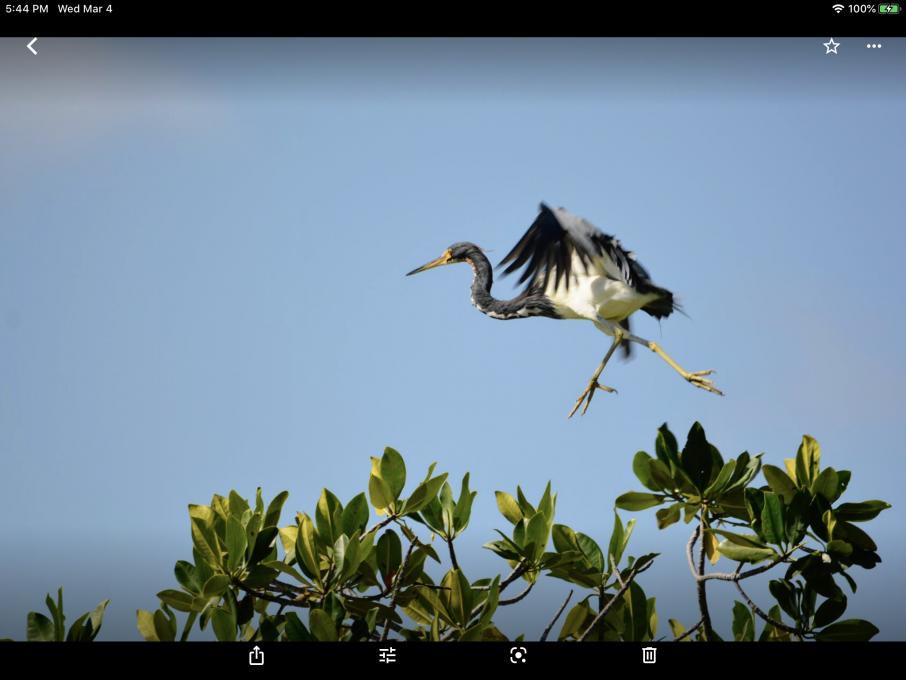 I enjoy trying to find birds doing unusual things, unlike the everyday. Again, I was lucky to be in the right spot at the right time, mangrove swamp in Mexico, when this heron leapt out from the tops of the trees. Nikon D7200 with 70-300 mm lens
I enjoy trying to find birds doing unusual things, unlike the everyday. Again, I was lucky to be in the right spot at the right time, mangrove swamp in Mexico, when this heron leapt out from the tops of the trees. Nikon D7200 with 70-300 mm lens 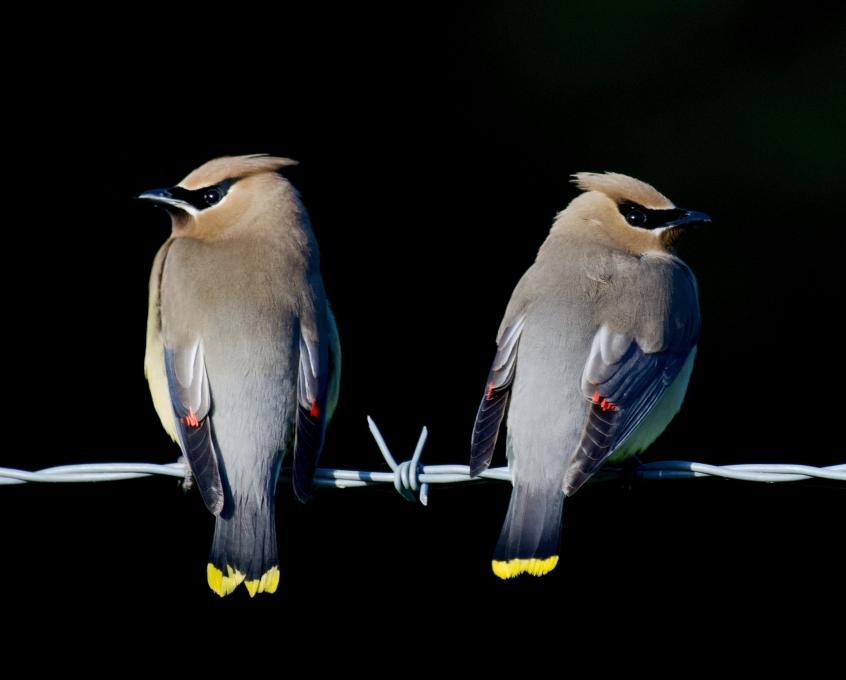 i
i 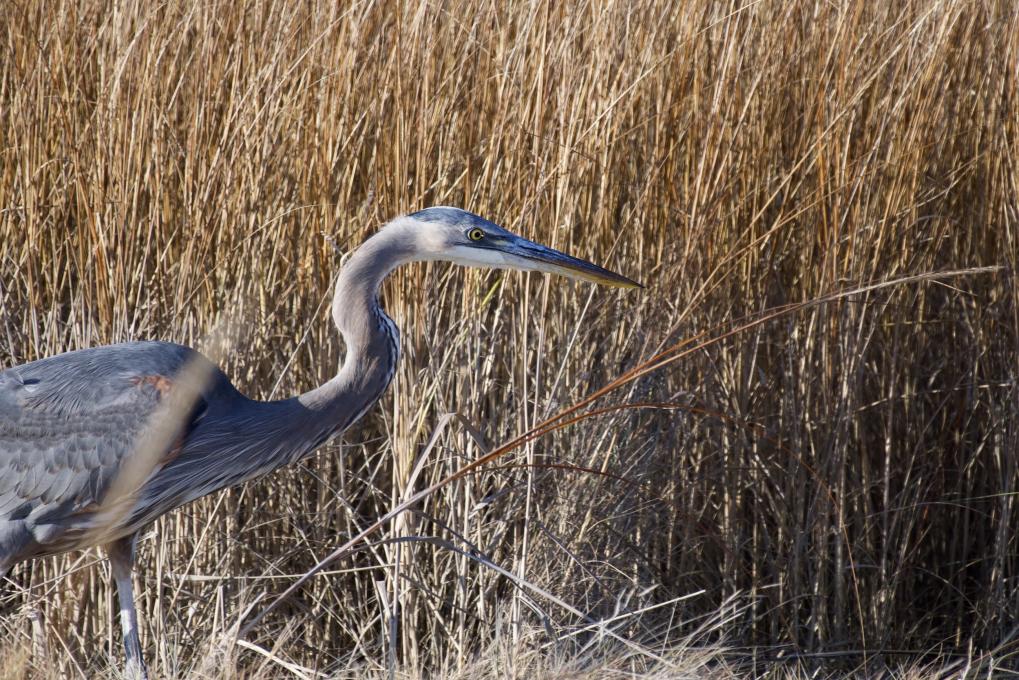 Great Blue Heron. Nikon D500 Nikkor F5.6 200-500 mm lens. F5.6 500mm ISO280 Taken in area where birds are used to lots of human traffic
Great Blue Heron. Nikon D500 Nikkor F5.6 200-500 mm lens. F5.6 500mm ISO280 Taken in area where birds are used to lots of human traffic 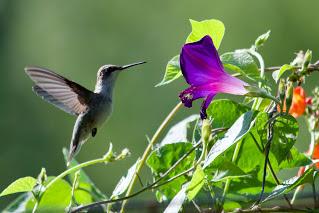 I want to get better at capturing birds in flight. This photo was taken with Nikon D500, a recent purchase that was affordable for me and offers excellent capture action.
I want to get better at capturing birds in flight. This photo was taken with Nikon D500, a recent purchase that was affordable for me and offers excellent capture action. 